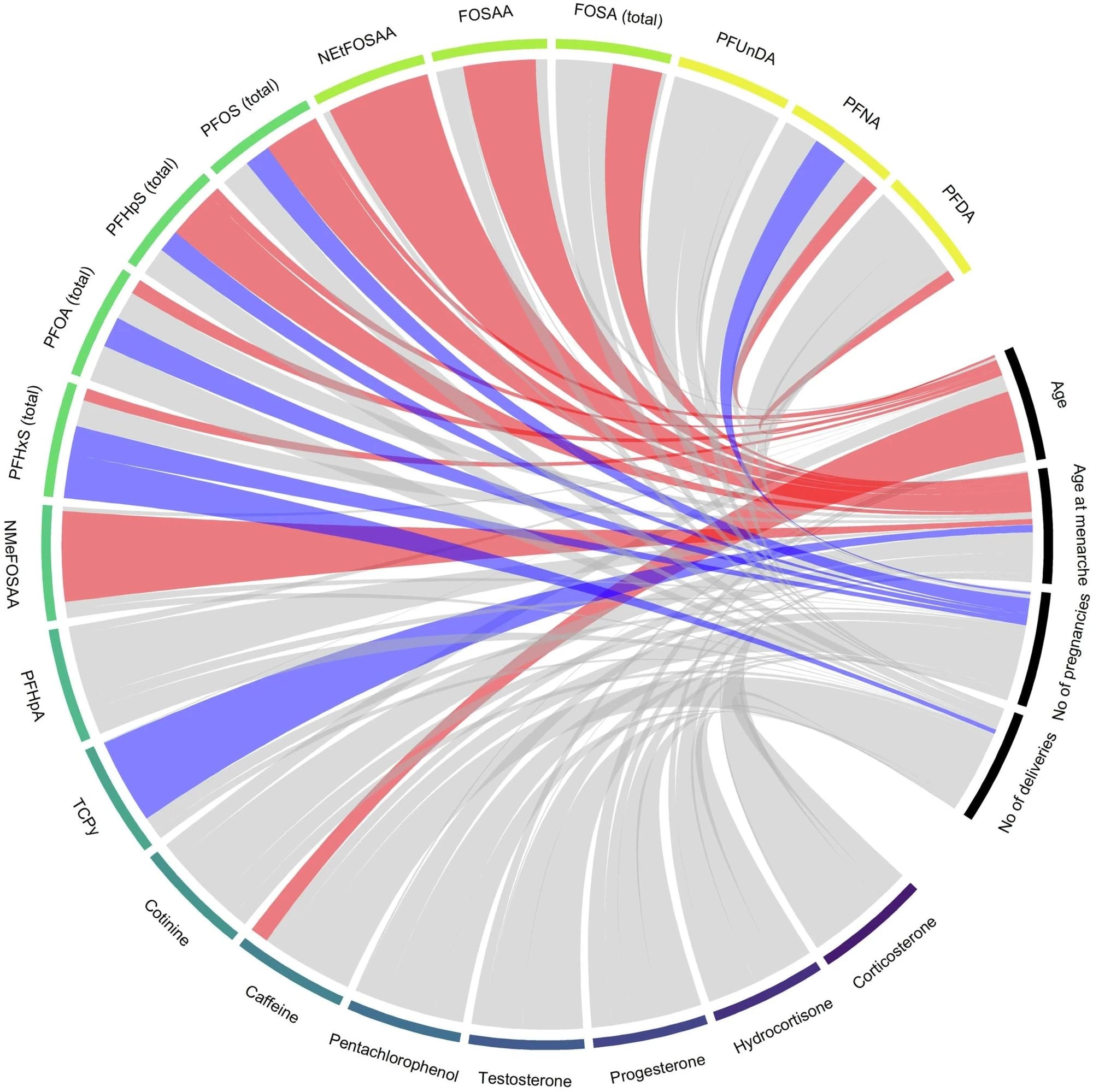A groundbreaking exposomics study reveals how environmental chemicals interact with key reproductive factors to influence breast cancer risk.
 Study: Chemical exposomics in biobanked plasma samples and associations with breast cancer risk factors. Image Credit: Tatiana Shepeleva / Shutterstock
Study: Chemical exposomics in biobanked plasma samples and associations with breast cancer risk factors. Image Credit: Tatiana Shepeleva / Shutterstock
In a recent study published in the Journal of Exposure Science & Environmental Epidemiology, researchers in Sweden explored the chemical exposome in plasma samples of healthy women and assessed its associations with breast cancer risk factors, specifically age, parity, and age at menarche.
Background
Breast cancer, a hormone-sensitive disease, may be influenced by exposure to endocrine-disrupting chemicals (EDCs) such as pesticides, parabens, and perfluoroalkyl substances (PFAS). These chemicals can interfere with hormonal homeostasis through interactions with cellular receptors or plasma proteins, with potential long-term impacts on mammary gland development.
Parity and age at menarche are particularly significant because these factors may alter the intensity and effects of EDC exposure, shaping breast cancer risk. Comprehensive chemical exposomics approaches are essential to disentangle environmental contributions to cancer risk and provide insights into chemical disposition across life stages.
 Positive associations are depicted in red and negative associations in blue. Gray lines represent non-significant associations.
Positive associations are depicted in red and negative associations in blue. Gray lines represent non-significant associations.
About the Study
The Northern Sweden Health and Disease Study (NSHDS) provided 161 plasma samples for analysis, originating from three sub-cohorts: the Multinational Monitoring of Trends and Determinants in Cardiovascular Disease (MONICA) study, the Västerbotten Intervention Programme (VIP) and the Mammography Screening Project (MSP). These biobanked samples were stored at −80°C and included detailed reproductive history data.
The study focused on 100 women free from breast cancer, selected based on reproductive history. Approximately 26% had no pregnancies, while others reported varying numbers of pregnancies, with 24% having more than four. A subset of 61 participants provided longitudinal samples up to 16 years apart, allowing for temporal analysis of chemical exposure.
Plasma samples underwent phospholipid depletion and were analyzed using a combined targeted and untargeted chemical exposomics approach involving liquid chromatography and high-resolution mass spectrometry (LC-HRMS). This method quantified 77 priority analytes, including environmental contaminants, dietary chemicals, and endogenous hormones.
Of the 94,349 untargeted features detected, 430 were structurally annotated. These included 246 environmental chemicals, 167 endogenous substances, and 17 analytes with ambiguous classification.
Statistical analyses, including linear mixed-effects models, examined associations between reproductive factors and chemical levels. Rigorous data adjustments accounted for potential confounders like birth year and sampling year. Correlations highlighted the possible influence of age, parity, and age at menarche on chemical exposures.
Study Results
The present study analyzed plasma samples from 100 women with a mean age of 43.4 years at their first sampling. Nulliparous women were notably older (mean age 58.3 years) compared to parous women (mean age 38.4 years at first sampling), reflecting their earlier birth years (1941 versus 1958 on average).
Tobacco use and hormonal contraception use were more prevalent among parous women. Among nulliparous women, only 15% reported tobacco use compared to 46% of parous women, and hormonal contraception use was reported by 42% of nulliparous women compared to 77-96% of parous women.
In the plasma samples, 55 targeted analytes from 13 chemical classes were detected. These included PFAS, pesticides, pharmaceuticals, dietary substances, and endogenous hormones such as progesterone and testosterone.
After filtering, 20 analytes, including PFOS, PFOA, caffeine, and pentachlorophenol, were retained for statistical analysis. Parity was inversely associated with certain PFAS analytes, such as perfluorohexane sulfonate (PFHxS) and perfluorooctane sulfonate (PFOS), while caffeine and perfluorooctanoate (PFNA) were higher among nulliparous women.
Associations with age were observed for several PFAS analytes, including perfluorooctanoic acid (PFOA) and perfluoroheptane sulfonic acid (PFHpS). Perfluorooctane sulfonamidoacetic acid (FOSAA) showed a borderline negative association with age.
Age at menarche was positively associated with six analytes, including perfluorooctane sulfonamide (FOSA) and PFOS, and negatively associated with 3,5,6-trichloro-2-pyridinol (TCPy), a herbicide metabolite.
Longitudinal trends revealed both decreasing concentrations of banned analytes like FOSAA and increasing concentrations of persistent PFAS such as PFNA and PFDA. These trends underscore the impact of regulatory measures.
Conclusions
To summarize, this study analyzed biobank plasma samples from 100 women (1987-2006) using LC-HRMS to examine 55 targeted analytes and 94,349 untargeted features, identifying associations with reproductive factors linked to breast cancer risk.
Declining levels of PFOS precursors (e.g., FOSAA, NEtFOSAA) reflected regulatory bans, while other PFAS chemicals (e.g., PFNA, PFDA) increased over time. Age correlated positively with PFAS levels and caffeine metabolites, while parity was inversely associated with PFOS, PFOA, and PFHxS, suggesting maternal transfer during pregnancy.
Untargeted analysis highlighted the endogenous metabolite DHAP, which showed strong links to parity, possibly reflecting its role in lactation and energy metabolism. These findings illustrate how chemical exposomics can illuminate the interplay between chemical exposures and reproductive health.
Journal reference:
- Edlund, J., Sdougkou, K., Papazian, S., Wu, W. Y., Martin, J. W., & Harlid, S. (2024). Chemical exposomics in biobanked plasma samples and associations with breast cancer risk factors. Journal of Exposure Science & Environmental Epidemiology, 1-11. DOI: 10.1038/s41370-024-00736-0, https://www.nature.com/articles/s41370-024-00736-0